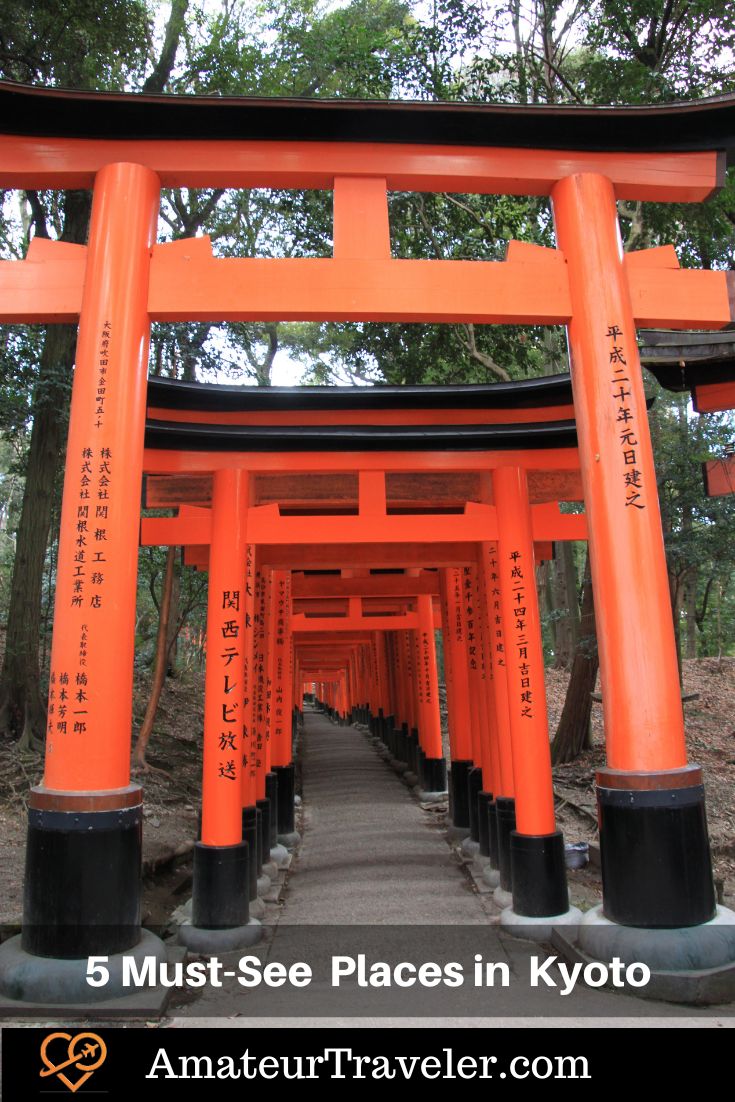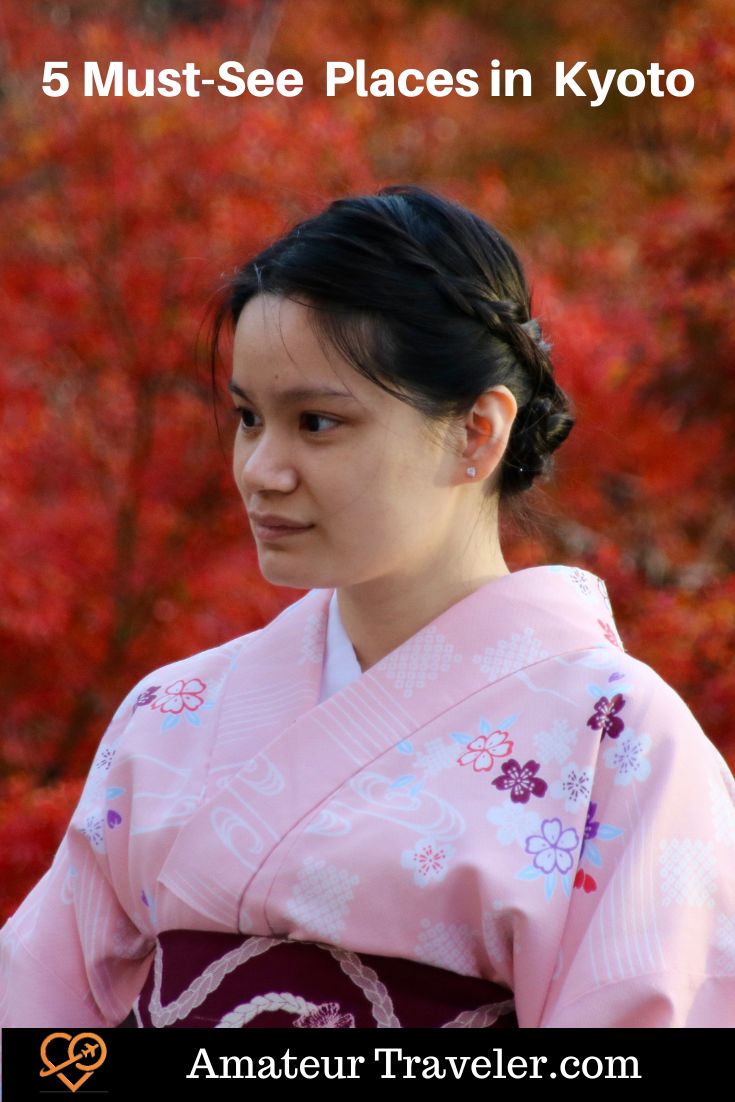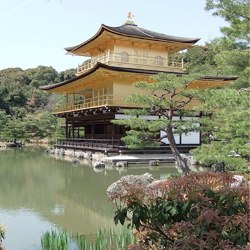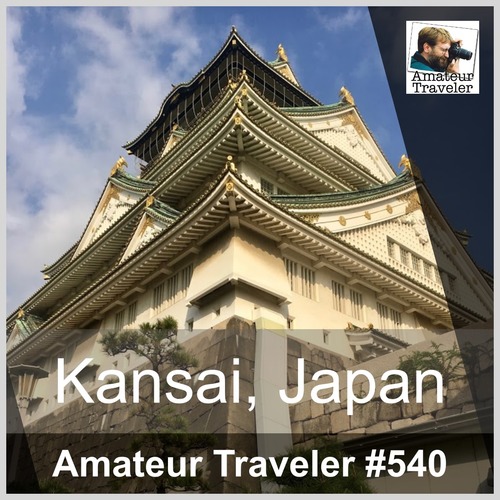5 Must-See Beautiful Places in Kyoto
categories: asia travel
Fushimi Inari-taisha
Many would say that Kyoto is the cultural capital of Japan. And they wouldn’t be wrong. The city is one of the oldest in the country, dating back to 794, when Emperor Kanmu designated it as the new seat of the imperial court. Kyoto was originally named Heian- kyō, meaning “tranquil capital.” From that year, Japanese emperors ruled from the city for no less than 1074 years until 1868. This year marks the end of the Boshin War, which signaled the end of the nearly 300-year-long dominion of the Tokugawa shogunate, opening the path for the restoration of Imperial rule. Emperor Meiji moved to Edo, which was thenceforth known as Tokyo. However, since there was no official law to designate Tokyo as the new capital city, many still hold the view that Kyoto still maintains its position.
Regardless of whether or not it is recognized as a capital, the fact remains that Kyoto is one of the most interesting and vibrant cities not only in Japan but the whole world. This is the perfect place to connect to historical Japan, the one you read about in books and probably believe you have no chance of seeing in real life. Well, if you’re a lover of history, tradition, and unbelievably beautiful sights, Kyoto is a dream come true. Here are some of the places you mustn’t miss when traveling to this astonishing city.
Table of contents: ()
Arashiyama Bamboo Grove
You’ve probably visited your fair share of wooded areas in your life, but this is probably going to be your first time visiting a bamboo forest. The fastest way to reach it is to take the JR Train from Kyoto station to Saga-Arashiyama Station. From there, you have only about ten minutes left to walk until you reach the forest. The bamboo grove is open 24/7, and there are no admission fees you must pay to enter. You’ll want to take your time and really admire the sights. Don’t speed walk through, but instead enjoy the immersive experience. If you’re lucky, you can observe the ancient tradition of ukai in the surrounding village. It’s a traditional fishing method which uses trained cormorant birds to catch river fish. The master fishermen have the official patronage of the emperor.
Fushimi Inari-taisha
The head shrine of Inari, the kami of agriculture, rice, tea, sake, fertility, industry, and foxes. The most striking part of this shrine is the Senbon Torii path, made up of thousands of vermilion gates that create a large network. The whole walk takes between two to three hours to complete, but you’re free to turn back whenever you wish. You can also admire the many kitsune sculptures.
The magical fox is a common character in Japanese folktales and legends, appearing in turn as a mischievous creature who enjoys tricking unsuspecting people or as a positive influence, either as a guardian or a friend. These foxes are believed to have multiple tails, some possessing as many as nine. These nine-tailed foxes, the kyūbi no kitsune, are older, wiser, and more powerful than the foxes with fewer tails. During the Edo period, between 1603 and 1867, they were seen as “witch animals” alongside badgers and cats.
At the Fushimi Inari, you can see one fox sculpture with a key in its mouth at the main gate and another holding a jewel. There’s also a kitsune-shaped fountain and an altar you can visit.
Gion
This district originated as a place to accommodate travelers coming to visit the nearby Yasaka Shrine. However, in time, it became the most renowned and exclusive hanamachi in all of Japan. Literally translated as “flower town,” Gion is a geisha district that survives almost untouched to this day. The area is well-known for its preservation of traditional arts and architecture. As the whole neighborhood is something akin to a museum, anywhere you go, you’re bound to see marvelous sights. Take a walk along Hanamikoji street and admire the machiya (traditional wooden townhouses) with sudare, the traditional Japanese blinds made of decorative wood or bamboo. You can also take a walk alongside the mellow Shirakawa river on the Gion Tatsumi Bridge, one of the most picturesque areas of the district.
Alongside the river, you can observe the ochaya, the establishments where geisha (who refer to themselves as “geiko,” or “maiko” if they haven’t yet completed their apprenticeship) work and entertain their guests by holding a conversation, performing the tea ceremony, playing the shamisen and execute intricate traditional dance routines. If you’d like to be entertained by a geiko, you should be aware that the price is roughly 50,000 yen, so around 400 US dollars. This amount goes to pay more than the performer’s wage, however, and also goes towards paying for the ornate kimono the geisha wears, as well as the complicated hairstyle and makeup that can take hours to finish.
However, before rushing to experience these customs, you should learn basic Japanese words and expressions. Not only will you have an easier time navigating society, but you’ll also leave a good impression on the local people, who’ll appreciate your respect for their culture. Native language is an important part of everyone’s identity, and when you show you’ve made an effort to learn, you’ll be viewed as more than a stereotypical tourist who visits a country but doesn’t want to learn anything new and is usually inconsiderate of local views and customs.
There are many ways to improve your knowledge of Japanese. In recent years, the Japanese language and culture have become increasingly popular in the West, meaning there’s no shortage of movies and shows you can choose from. There are many genres to choose from, and all you have to do is turn the subtitles on. Learning is much easier when you experience it through a medium you enjoy. The same can be said about reading manga, Japanese graphic novels. The advantage of manga is that you can benefit from the use of furigana (little hiragana or katakana characters) in deciphering the kanji alphabet. It’s important to listen to Japanese as much as you can to get a better feeling of the pronunciation and tonality people use in casual conversation. You should also make time to practice writing as much as you can. Kanji can be daunting in the beginning, but if you start off small and go from individual characters to phrases and then sentences, you’ll see that it’s not as difficult as it seems at first glance.
Ryokan
If you visit Kyoto, it would be a pity if you didn’t choose a ryokan for your accommodation. These traditional inns offer a quaint, aesthetically-pleasing experience no hotel will ever be able to replicate. Japanese philosophy prizes beauty and harmony in everything, and there’s no better way to experience that than in a ryokan located in a scenic area. They have existed since the 8th century, and they are decorated in the traditional method. The flooring is made of tatami mats, while the doors are fusuma or shoji. Both are types of sliding doors, but the former is opaque, while the latter contains translucent material and is, therefore, more transparent, allowing light to get in. One of the best aspects of a ryokan is that you can socialize with the other guests, as well as the hosts. This can happen either in the entrance hall or on the engawa, the veranda facing outside.
When at a ryokan, you can experience aspects of traditional Japanese life. You’ll be provided with a yukata, an unlined, casual kimono, to wear, as well as a pair of geta, the Japanese footwear resembling flip-flops. Balancing on the wooden soles, which typically contain two “teeth,” can be a bit of a struggle in the beginning, but it’ll help you improve your balance. If you’re feeling confident and want to take it a step further, you can try the ashida or tengu geta, the latter of whom has a 7.9-inch single-tooth sole.
You’ll also be able to experience traditional Japanese meals, known as kaiseki. Japanese cuisine is based on seasonal ingredients and regional specialties. However, you have to be punctual about the meals. Your hosts will ask you to confirm at what hour you want to have the meal served so that you can enjoy it at the proper room temperature.
While some ryokan serves a selection of Western foods, it would be a pity to miss out on the experience of enjoying kaiseki courses. They consist of several dishes, each of them small and arranged in an aesthetically pleasing fashion. Everything about it will be a sensory experience. While the original meal traditionally includes a bowl of miso soup and three side dishes (known in Japanese as “okazu”), current variations include sashimi, grilled dishes, and steamed recipes. Some of them include:
- Takiawase: vegetables served with tofu, fish, or meat
- Su-zakana: vegetables in vinegar, generally served to cleanse the palate
- Tome-wan: soup served with rice
- Mizumono: seasonal dessert
Nishiki Market
Literally translated as “brocade market,” Nishiki Market is known as a great place to obtain all types of foods and goods. Located on the east of Nishikikōji Street, the west of Teramachi Street, and one block north of Shijō Street, one of the avenues running through the commercial center of Kyoto, you can find anything you want here. While malls do exist, you shouldn’t miss out on the opportunity to do some shopping in a more traditionally-based environment. While you may have to look around a little more until you find what you want, you’ll see that it all becomes part of the experience.
The market has existed in one form or another since at least 1615, and it contains well over one hundred shops and stalls. You can pop into Daiyasu if you’re looking to get some raw oysters or into Nishiki Takakuraya, which sells Tsukemono, vegetables preserved in brine, salt, or in rice bran.
If you’re looking to bring home souvenirs, Touan Nishikikōjiten sells the gorgeous Kyō ware, distinguished by its vibrant colors. Some variations are less than a millimeter thick, making them translucent against the light. Some variations of the pottery include Kiyomizu, traditionally made near the temple with the same name, or Rengetsu, taking its name from the Buddhist nun Ōtagaki Rengetsu, one of the greatest poets of 19th century Japan, who was also an expert potter and calligrapher. The design she created has a more rustic look compared to the other two.
If you’re passionate about cooking, you are already aware that Japan has one of the most amazing cuisines in the world, listed since 2013 on the UNESCO Intangible Heritage List. Great dishes need great utensils to come into existence, which is why you should visit Aritsugu to stock up on kitchen utensils and knives. The store was founded in 1560 by Fujiwara Aritsugu, a master swordsmith who supplied the Imperial House with blades until the emergence of the Tokugawa shogunate brought with it a more peaceful era in which there was less need for swords. The current proprietor is the 18th generation to be involved since the store’s inception.
Nishiki Market is also referred to as “Kyoto’s kitchen” due to its many food stalls. If you’re getting hungry after a long day of sightseeing, you can just walk in, and you’re sure to find some ready-made dishes to satiate you. You can try tako tamago, a candied baby octopus with a quail’s egg, or one of the many varieties of mochi, either dusted with kinkako (toasted soybean flour), or filled with red bean paste. Kashiwa mochi is wrapped in an oak leaf that’s meant to symbolize prosperity for your descendants and isn’t meant to be eaten. In the case of Sakura mochi, however, it’s the complete opposite. The cherry blossom leaf is actually an integral part of the taste. Dried fish, traditional wagashi sweets, and the rolled omelet known as tamagoyaki are also popular alternatives you must give a try yourself.
Other Places
Some of the other places you should include on your itinerary include the Ryōan-ji Zen temple and its famous kare-sansui rock garden, the Otagi Nenbutsu-ji, a Buddhist temple numbering no less than 1200 rakan stone statues representing Buddha’s disciples, and the Yokai street, a place with many representations of the supernatural spirits and entities of Japanese folklore.
Let’s be honest, you’ll probably need more than one visit to Kyoto to experience as many of its sights as possible. This charming, timeless city is bound to leave you wanting to return year after year to uncover more of its mysteries.











 Travel to Kyoto, Japan – Episode 297
Travel to Kyoto, Japan – Episode 297 6 Spots Tourists Miss In Kyoto
6 Spots Tourists Miss In Kyoto Japan Vending Machines
Japan Vending Machines Travel to Kyoto and the Kansai Region of Japan – Episode 540
Travel to Kyoto and the Kansai Region of Japan – Episode 540
